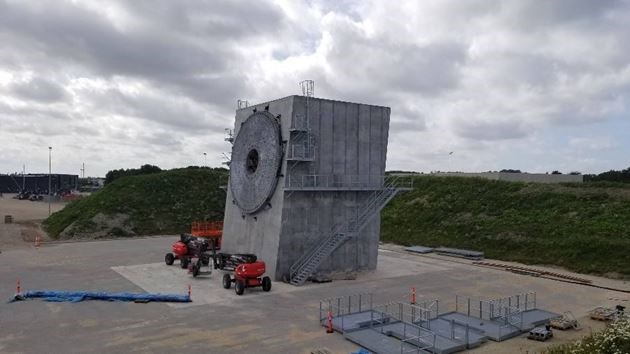Siemens Gamesa to build world's largest wind turbine test stand
The company’s site in Aalborg, Denmark will be capable of performing full-scale tests on the next generations of rotor blades.

Source | Siemens Gamesa Renewable Energy
Siemens Gamesa Renewable Energy (SGRE, Zamudio, Spain) has begun construction of the world’s largest wind turbine blade test stand in Aalborg, Denmark. The site will be capable of performing full-scale tests on the next generations of SGRE rotor blades and is expected to be fully operational before the end of 2019.
The company says the aim of the R&D investment is to significantly reduce the risk of technical issues and simultaneously deliver wind turbines that are innovative and reliable.
“The first tests will be on the 94 meter-long blades for the SG 10.0-193 DD offshore wind turbine, which are almost the same length as one soccer field. We are however building the test stand to accommodate the blade sizes that we will see in the future,” says Vicente GarciĖa MunĖoz, head of Validation Means Management at SGRE.
According to SGRE, the test stand structure will incorporate more steel rebar reinforcement per square meter than a wind turbine foundation and have the capability to accelerate the test and prove full reliability over the lifetime of the blade in the shortest possible time, while fully respecting International Electrotechnical Commission (IEC, Geneva, Switzerland) regulations.
Related Content
-
Trends fueling the composites recycling movement
Various recycling methods are being considered for composites, from novel dismantling and processing, to building capacity and demonstrating secondary use applications.
-
Composites end markets: Energy (2024)
Composites are used widely in oil/gas, wind and other renewable energy applications. Despite market challenges, growth potential and innovation for composites continue.
-
SRI develops scalable, infiltration-free ceramic matrix composites
Work in two DOE projects is demonstrating C/C-SiC produced in 3-5 days with <5% shrinkage, <10% porosity and 50% the cost of conventional C/C and C/C-SiC.






